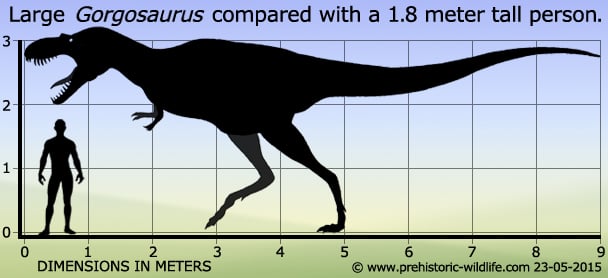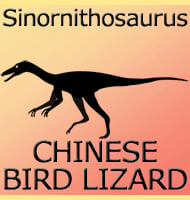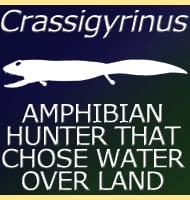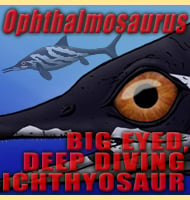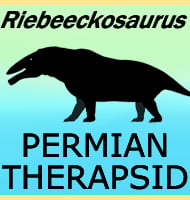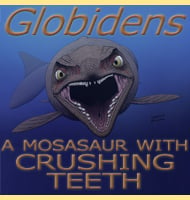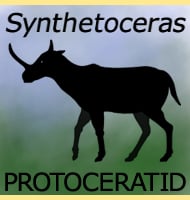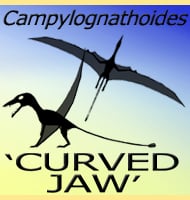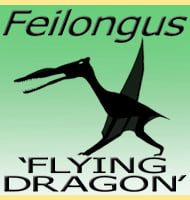In Depth
Gorgosaurus had the same basic body plan of all tyrannosaurids with a large head on an s-shaped neck, small arms and bipedal stance. With around sixty teeth in its mouth (there is some variance between specimens) Gorgosaurus shared a common trait with other tyrannosaurids of its size, as the larger the tyrannosaurids go the less teeth they have.
A skin impression of Gorgosaurus discovered by Philip J. Currie shows that its skin lacked the large scales as often found in other dinosaurs, giving it a smooth texture, not unlike the secondarily featherless skin of birds. This also lends further support to the theory that the larger dinosaurs did not have feathers on the grounds that larger bodied animals naturally lost less heat because of the smaller surface area to body volume ratio.
As with other tyrannosaurids, Gorgosaurus went through an initial stage of slow growth when young before suddenly shooting up to adult size within the space of a few years. Normally it is found that the femur is the longest bone in the leg, but some specimens of young Gorgosaurus show the tibia was the longer of the two. This arrangement of longer lower leg bones is seen in many fast running animals and reinforces the theory that when young, Gorgosaurus would have focused its attention upon hunting fast moving prey such as ornithomimids. When the growth spurt kicked in, the femur would likely grow to be longer reducing the potential speed of Gorgosaurus, although the longer stride of bigger legs may have compensated for this in some part. This would also initiate a shift in hunting patterns for larger prey such as hadrosaurs that would have been better able to sustain a large predator. Two hunting patterns at different life stages would also reduce competition between the adult and juvenile members of the species.
Gorgosaurus roamed North America at the same time as another tyrannosaurid, Daspletosaurus. Although both are approximately the same size as one another, Gorgosaurus has a more gracile build to that of the robust Daspletosaurus. This has led to speculation that the two may have specialised in hunting different types of prey with Gorgosaurus favouring the swifter dinosaurs such as hadrosaurs.
There has been a lot of debate as to whether Gorgosaurus deserves its own genus on the basis that it is so similar to another member of the tyrannosaurids, Albertosaurus. Being more gracile than other tyrannosaurids, Both Gorgosaurus and Albertosaurus appear much alike and also have adult sizes similar to one another. Those in favour of keeping these two dinosaurs separate point to subtle differences in the bones of the two, particularly the skull bones that encase the brain. Most of those involved though will concede that further study needs to be done before any decision can be made.
Further Reading
– On a new genus and species of carnivorous dinosaur from the Belly River Formation of Alberta, with a description of the skull of Stephanosaurus marginatus from the same horizon. – The Ottawa Naturalist 28:13-20. – Lawrence Lambe – 1914. – On the fore-limb of a carnivorous dinosaur from the Belly River Formation of Alberta, and a new genus of Ceratopsia from the same horizon, with remarks on the integument of some Cretaceous herbivorous dinosaurs. – Ottawa Naturalist 27: 129–135. – Lawrence Lambe
